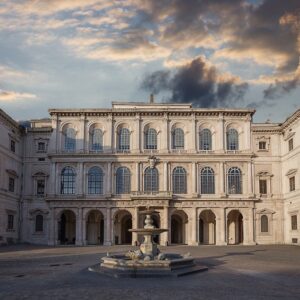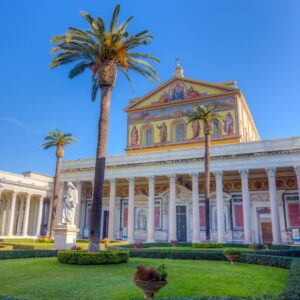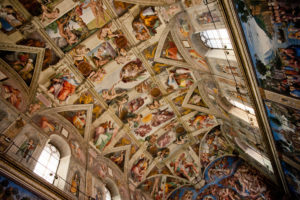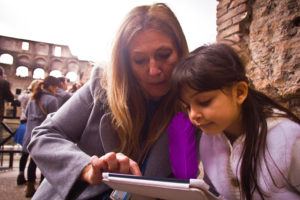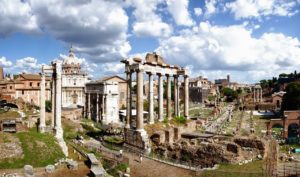The historic center of Rome is a veritable open-air museum rich in churches, monuments, archaeological sites, squares, fountains, and much more. To visit all the wonders contained in this area, probably a month would not be enough. If we were to include all the monuments, historical-artistic sites, and archaeological sites outside the perimeter of the historic center, the time needed would be considerably longer.
Any tourist visiting the Eternal City, whether for the first time or not, must make a selection of the works and places to visit. If you have a few extra days to spare, the Basilica of San Lorenzo fuori le Mura, located near Via Tiburtina, is definitely a place to see.
History of Basilica di San Lorenzo
The church is the result of the fusion of two distinct structures built, one at the end of the 6th century and the other in the 13th century, around the tomb of Saint Lawrence, martyred on August 10, 258, on a burning grill, which is now preserved in the Church of San Lorenzo in Lucina following the edict issued by Emperor Valerian and then buried along the Via Tiburtina. The church also preserves the relics of Saint Stephen; this makes the church one of the most venerated in Rome, as well as one of the oldest in the city. With Constantine, the tomb was arranged to allow access to the faithful inside; always by Constantine, a large brick basilica, with three naves, was built near the tomb, which remained standing until the 9th century. It was Pope Pelagius II who, in 580, built a new building next to the martyr’s tomb to accommodate an ever-increasing number of pilgrims, but it was with Pope Honorius III Savelli that the current appearance was reached: he had a new church built, which replaced, incorporating and transforming it into a presbytery after reversing its orientation, the basilica built by Pelagius II.
Restoration after 1943
In modern times, there was an important restoration intervention, following the bombing of 1943, which attempted to restore the basilica to its medieval appearance. The façade, preceded by a portico supported by six columns and decorated with frescoes from the 13th century, has three arched windows and was completely rebuilt after the end of World War II. To the right of the facade stands the Romanesque brick bell tower of the 12th century built on 8 floors. Inside the bell tower are two bells, the smaller one from 1800 and the larger one from 1856.
Interiors of the Basilica
The Basilica consists of three naves and already at first glance shows the non-homogeneous appearance given by the presence of one in the other of the two basilicas, the Pelagian and the Honorian. There are twenty-two columns dividing the naves, different in materials used and in size. In the presbytery is located the confession of the tomb of St. Lawrence, while in the center of the Cosmatesque floor rises the ciborium, the oldest work signed by Roman marble workers, consisting of four shafts in porphyry supporting a pyramidal cover. On the back wall is the episcopal throne and in the triumphal arch the famous mosaic from the end of the 6th century depicting Christ among the Saints Paul, Stephen, Hippolytus, Peter, Lawrence, and Pope Pelagius.
The Basilica of San Lorenzo fuori le Mura thus represents one of the most authentic testimonies to have reached the present day of the strenuous expansion of Christianity in Rome and an excellent example from the architectural point of view of churches built on already existing nuclei.
If you are interested in Christian Rome we suggest to have a look to our Private Tour of Christian Rome.
Useful information
The Basilica of San Lorenzo fuori le Mura is located in Piazzale del Verano, not far from Tiburtina station.
It is open from 7 am to 12 pm and from 4 pm to 7 pm. Weekday masses are at 8 am and 6:30 pm. On Saturdays at 6:30 pm and on Sundays at 9:30 am, 11 am, and 6:30 pm.
Photo credits: @IoViaggioLowCost365 on Tripdvisor







